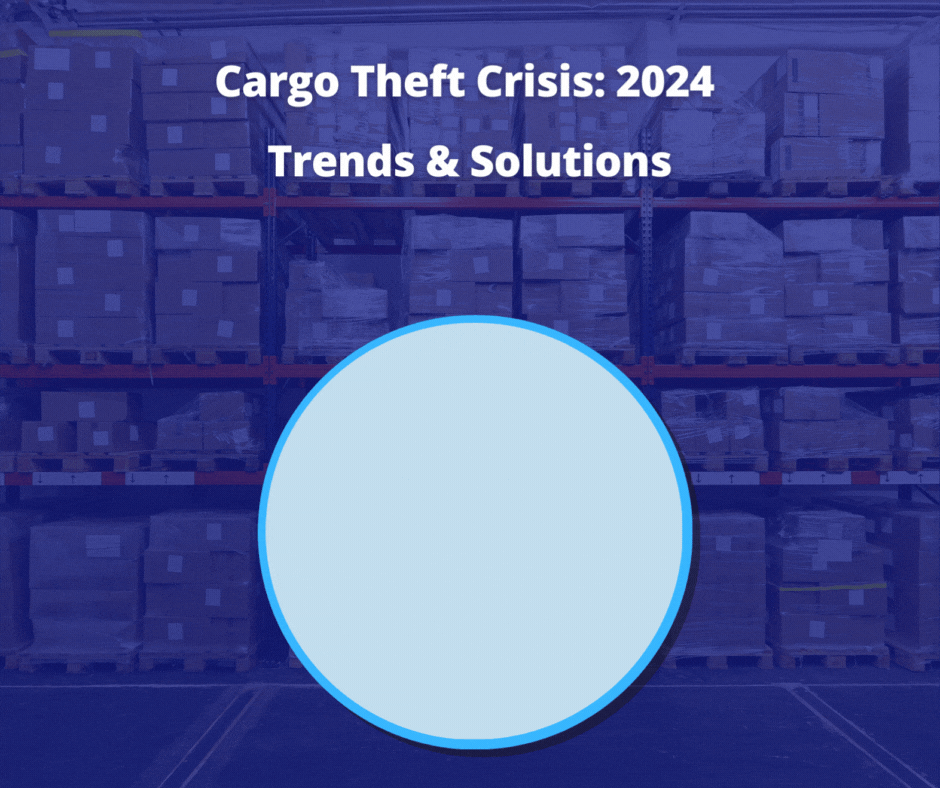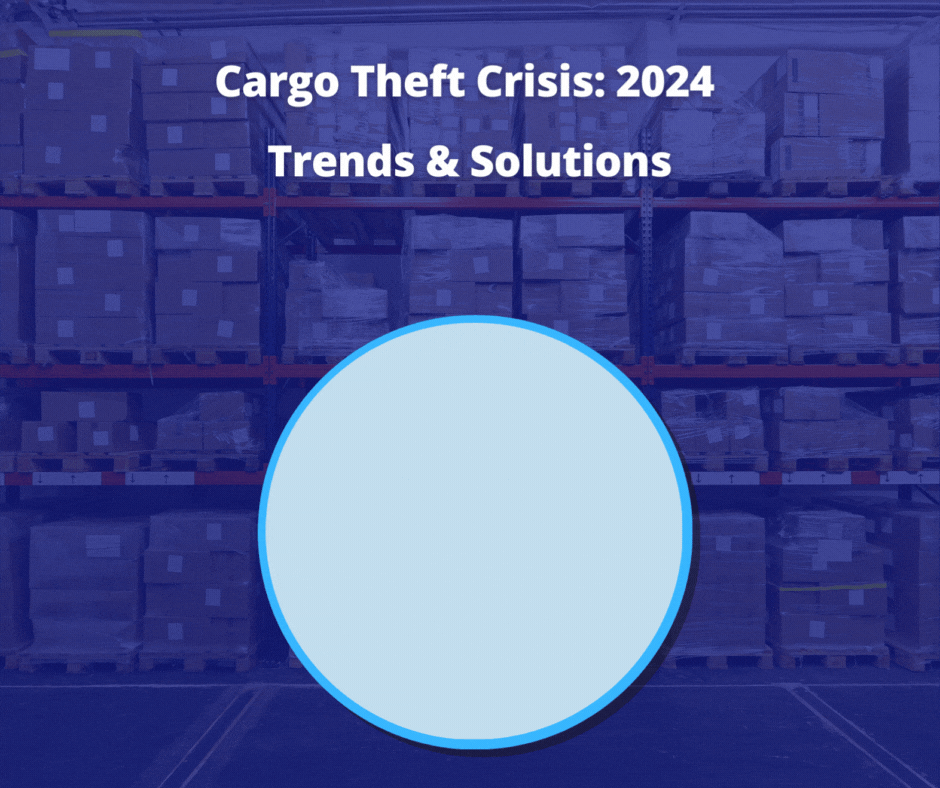
Recent Trends & Their Implications
Introduction
As the logistics and transportation industry continues to navigate a landscape marked by increasing global interconnectedness, cargo theft has surged to alarming levels, particularly in 2024. This uptick in criminal activity has sparked concern among industry stakeholders, from truckload carriers to warehouse operators, as they grapple with significant financial losses and operational disruptions. This article delves into the recent spike in cargo theft incidents, leveraging up-to-date statistics and expert insights to explore the underlying factors and emerging trends.
Current State of Cargo Theft
In the first quarter of 2024, the logistics industry faced a significant escalation in cargo theft, highlighting an urgent need for enhanced security measures and policy adjustments. According to a recent report from CargoNet, there was a 46% increase in cargo theft incidents compared to the previous year’s first quarter. This surge reflects a troubling trend affecting states that serve as major logistics and transport hubs.
State-Specific Trends
- California, Texas, and Illinois experienced the most substantial increases in cargo theft incidents. These states, crucial for their roles as transport and logistics hubs, reported losses of approximately $154.6 million in stolen goods.
- In California alone, reported incidents rose by 50%, with losses predominantly in electronics and consumer goods, highlighting the state’s significant role in technology and retail supply chains.
- Texas saw a 45% increase in incidents, with a notable frequency in thefts from parked trailers and warehouse break-ins, underscoring vulnerabilities in stationary cargo and storage facilities.
- Illinois, acting as a central freight hub for the Midwest, reported a 40% increase. Many thefts involved shipments en-route, suggesting that in-transit goods are particularly at risk.
Experts suggest several factors contributing to the rise in cargo theft. First, the increase in e-commerce has expanded opportunities for theft during transit due to higher volumes of goods shipped daily. Second, the economic downturn has potentially led to heightened criminal activity as individuals and organized groups look to illicit means to obtain goods.
Freight security specialists highlight that these states’ geographic concentration of thefts is no coincidence. The high volume of goods moving through these regions makes them prime targets. The economic impact is profound, affecting not only the direct costs associated with stolen goods but also secondary costs related to insurance, security upgrades, and potential delays in supply chains.
Recommendations for Mitigation
To combat the rising tide of cargo theft, experts recommend a multi-faceted approach:
- Enhanced Security Measures: Investment in GPS tracking, real-time monitoring systems, and enhanced physical security at warehouses and during transit.
- Collaborative Efforts: Greater cooperation between state law enforcement agencies and private companies allows for the sharing of intelligence and coordination of responses to theft incidents.
- Policy Initiatives: Develop stricter penalties for cargo theft and improve regulatory measures to protect freight movements.
Emergence of Sophisticated Theft Techniques
The logistics industry is witnessing an alarming evolution in cargo theft tactics, with criminals increasingly adopting more sophisticated methods to execute their plans. This shift towards advanced theft techniques poses significant challenges for tracking and recovering stolen goods, fundamentally changing the landscape of supply chain security.
Recent Trends in Theft Techniques
- Document Forgery: One of the most concerning trends is the rise in document forgery associated with cargo thefts. Criminals are increasingly adept at altering transportation and customs documents, making it difficult for authorities and companies to trace the origin and intended destination of stolen goods. This method effectively disguises the illicit movement of goods across states and borders, complicating legal efforts to apprehend perpetrators and reclaim goods.
- Cyber Intrusions: There has also been a noticeable increase in cyber-attacks targeting logistics databases and systems. Hackers infiltrate networks to obtain shipment details and schedules, which they then exploit to intercept goods discreetly. These cyber intrusions lead to direct losses through theft and compromise sensitive data, further endangering the entire supply chain.
- GPS Jamming and Spoofing: Another sophisticated technique involves the use of GPS jamming and spoofing devices to mislead tracking systems. Thieves use these devices to create false trails or hide the actual location of stolen cargo, significantly delaying response times and recovery efforts.
Implications for the Logistics Industry
The sophistication of these theft methods requires a corresponding evolution in security strategies. Logistics companies are urged to adopt more advanced technological solutions to counteract these threats:
- Enhanced Verification Processes: Implementing more rigorous checks and balances within the document verification process to catch discrepancies and potential forgeries.
- Advanced Tracking Technology: Upgrading GPS and RFID (Radio Frequency Identification) technologies to include tamper detection and enhanced encryption to counteract jamming and spoofing.
- Increased Cybersecurity Measures: Strengthening cybersecurity protocols, conducting regular security audits, and training staff to recognize potential cyber threats are not just important but essential steps in protecting logistical data.
The rise in cargo theft not only causes direct financial damage but also triggers a series of systemic disruptions throughout the logistics and shipping industries. The impacts of these thefts are particularly pronounced in states like California and Texas, which serve as crucial nodes in national and international supply networks.
Systemic Impacts on Logistics and Shipping
- Supply Chain Disruptions: Cargo theft can lead to significant disruptions in the supply chain. When goods are stolen, it creates gaps in the supply that cannot easily be filled, leading to delays and inefficiencies across the network. These disruptions can halt production lines and lead to significant operational challenges for industries reliant on just-in-time delivery systems, such as automotive or manufacturing.
- Elevated Operational Costs: Companies often face increased operational costs due to cargo theft. These costs come from the need to replace stolen goods, enhance security measures, invest in advanced tracking technologies, and sometimes pay increased insurance premiums. Over time, these elevated costs can significantly affect the bottom line of businesses operating within these sectors.
- Delivery Delays: The theft of key cargo items can lead to delays in delivery schedules. For businesses that promise rapid delivery services, these delays can damage reputations and lead to customer dissatisfaction and loss. Delays can also compound, affecting the immediate customer and several others in the supply chain.
- Strategic Concentration in Major States: The fact that thefts are strategically concentrated in major logistic hubs like California and Texas adds a layer of complexity. Due to their size, economic output, and strategic location, these states are critical for the transport of goods across and within the United States. Disruptions here can have ripple effects that impact national and international trade flows, illustrating the broad-reaching implications of localized theft incidents.
Implications for Industry Practices
The ongoing challenges posed by cargo theft necessitate a reevaluation of current logistics and security practices. Companies are increasingly required to:
- Integrate Comprehensive Security Solutions: Implementing end-to-end security solutions that safeguard goods, including physical, cyber, and procedural elements.
- Plan for Redundancy: Building redundancy into supply chains to mitigate the effects of theft-related disruptions. This might include keeping higher inventory levels or using multiple warehouses spread across different locations.
- Foster Stronger Collaborations: Working more closely with law enforcement and participating in industry-wide data-sharing initiatives to predict and prevent potential thefts.
In response to the mounting threat, logistics companies invest in enhanced security measures and adopt innovative technologies. GPS tracking and real-time monitoring systems are becoming standard practice, aimed at improving the visibility of cargo movements and swiftly identifying theft incidents. Furthermore, collaboration among industry stakeholders, including law enforcement and insurance providers, is intensifying to develop more effective strategies to combat these crimes.
Wrapping Up
As the logistics and shipping industries continue to confront the escalating challenge of cargo theft, the need for a proactive and comprehensive approach has never been more critical. By understanding the evolving landscape and integrating advanced security technologies, the industry can better protect its assets, thus ensuring the smooth functioning of global supply chains. The commitment to ongoing vigilance and adaptation is crucial in safeguarding against future threats and maintaining the integrity of the logistics network.


